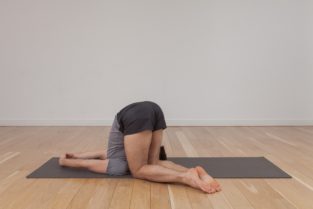New dates coming soon.
Zoga
After launching in America and Europe, to rave reviews, Zoga is available in Australia for the very first time, at an early booking price of just $750AUD! Must end 30th September 2019!
"Intelligent Movement backed up by Research"
ZOGA: Zoga is a stretching and strengthening practice based on yoga asanas using Anatomy Trains Structural Integration principles. Zoga is specifically designed to increase the freedom of glide between myofascial layers of the body.
The human body is designed to move from our center of gravity into all available directions. Zoga includes all these possibilities in assessment and therapy.
Zoga practice allows you to:
Bodyread where lack of glide and ‘give’ are occurring in the body
Use movement and manual guidance to elicit efficient and balanced movement
Achieve a balanced and ‘minimum energy’ resting posture
In this 3-day Zoga introductory workshop you will learn:
How myofascial layers move on each other in stretch
How Anatomy Trains Lines adapt to stretching
How specific positioning within asana creates fascial stretch and gliding challenges
Visual assessment of posture and movement that lead to new intervention strategies
How to help students / clients find sand open those obscure and stubborn ‘corners’ in the moving body
Training in manual interventions
The human body is designed to move from our center of gravity into all available directions. Zoga includes all these possibilities in assessment and therapy.
Zoga practice allows you to:

Bodyread where lack of glide and ‘give’ are occurring in the body
Use movement and manual guidance to elicit efficient and balanced movement
Achieve a balanced and ‘minimum energy’ resting posture
In this 3-day Zoga introductory workshop you will learn:
How myofascial layers move on each other in stretch
How Anatomy Trains Lines adapt to stretching
How specific positioning within asana creates fascial stretch and gliding challenges
Visual assessment of posture and movement that lead to new intervention strategies
How to help students / clients find sand open those obscure and stubborn ‘corners’ in the moving body
Training in manual interventions
Like yoga, Zoga uses the physical asanas, or poses, to bring hydration and glide to tissues, but with a twist. Zoga uses the principles of Structural Integration in assessment of what soft tissue patterns are present, and how these intentional, directional, and gliding sequences of movement can help unwind and potentially heal long held patterns.
By changing the driver of the stretching movement, Anatomy Trains teacher Wojtek Cackowski has created a significant development in functional stretching that opens us up to more movement more quickly.
By changing the driver of the stretching movement, Anatomy Trains teacher Wojtek Cackowski has created a significant development in functional stretching that opens us up to more movement more quickly.
I had a 30 degree scoliosis that was causing me a lot of pain and discomfort. As a physiotherapist I was looking at yoga mostly from a body movement perspective and I was using asanas as rehabilitation positions to achieve different outcomes in my practice or in my one on one rehab sessions with my patients.
When I graduated from the ATSI program, I wanted to see how only the Structural Integration could change my system, so I stopped my yoga practice for about a year to observe the changes made by the Structural Integration practice, which were great; my aches and pains went away and I felt much better in my “body suit”. After a few months I came back and started to explore my yoga practice with a new understanding of my own pattern, and a new understanding of anatomy and how different structures can relate to each other. This was the beginning of Zoga.
After a year of exploration, I found some relationships and some movements that did not make total sense for me in terms of my understanding of what is short and what is long in my body’s architecture. Some joints were reacting short in one position but not so short in different asanas. What was missing? Why was I getting different results when I was using these directional movements than when I was only stretching my muscles?
Tom says, “Recent research points to most movement restriction not being a matter of tissue length, but the ability of the fascia to internally glide. If you thought you knew all about stretching, think again - and give this new Zoga class a try.”
When I graduated from the ATSI program, I wanted to see how only the Structural Integration could change my system, so I stopped my yoga practice for about a year to observe the changes made by the Structural Integration practice, which were great; my aches and pains went away and I felt much better in my “body suit”. After a few months I came back and started to explore my yoga practice with a new understanding of my own pattern, and a new understanding of anatomy and how different structures can relate to each other. This was the beginning of Zoga.
After a year of exploration, I found some relationships and some movements that did not make total sense for me in terms of my understanding of what is short and what is long in my body’s architecture. Some joints were reacting short in one position but not so short in different asanas. What was missing? Why was I getting different results when I was using these directional movements than when I was only stretching my muscles?
Tom says, “Recent research points to most movement restriction not being a matter of tissue length, but the ability of the fascia to internally glide. If you thought you knew all about stretching, think again - and give this new Zoga class a try.”
